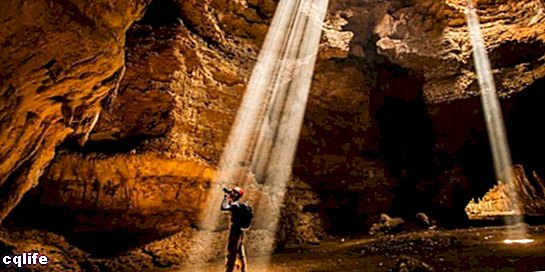We explain what caving is, its history and relationship with other disciplines. In addition, characteristics of each type of caving.

What is caving?
Caving is the science which is dedicated to studying the natural cavities of the earth's subsoil, that is, the caverns, grottos and the underground courses of Water. It is a discipline which is part of the geomorphology, although there are also those who link it with a sports or recreational practice, known as caving.
However, it is not only the recreational or sporting aspect that interests caving, since its route through caves, grottos and other underground formations offers enormous amounts of information to hydrogeology, to geography, the biology and even the archeology Y paleontology. At the same time, there is life-saving in the cave context, known as espeleosocorro.
As can be seen, caving is a complex field of practical and theoretical knowledge (especially geological, geochemical and geobiological) in which complex topographic descriptions are carried out and all kinds of underground discoveries are cataloged: minerals, forms of life (especially the animal and microscopic), fossil finds, etc.
Its formal practice began in 1895, when the French lawyer and nature enthusiast Édouard-Alfred Martel (1859-1938), considered the father of the discipline, founded the Speleological Society of France.
Since then it has been carried out throughout the world and with great interest, since the depths of the Earth crust are still little known by the humanity. Some prominent names in this discipline were the French volcanologist Haroun Tazieff (1914-1998), the Spanish geologist Noel Llopis Lladó (1911-1968) and the Ukrainian caver Guennadi Samojin.
Types of caving
Depending on your context and, therefore, of its practices, caving can be classified as:
- Karst caving. That which takes place in large underground cavities, usually generated by the activity of the Water in the most soluble rock massifs (limestone or dolomite), or in gypsum, saline massifs or even under glaciers. Its name comes from the Slovenian word kars, with which the stony and barren lands, typical of the latitudes cold.
- Volcanic caving. That which takes place in volcanic cavities, that is, those created by volcanic magma during eruptions or violent tectonic movements, or by displacements typical of materials from volcanic regions, which give rise to the so-called "lava tubes". Contrary to kars, these underground cavities are usually less steep and drier and warmer, but at the same time made of more complicated and rough materials.
- Cave diving. The one that takes place in flooded or underwater caves, that is, diving in submerged caves. It is the most complex and challenging practice of caving, and one of the riskiest activities in the underground study, which requires complex and specialized equipment, as well as specialists in both speleology and the practice of underwater work.
